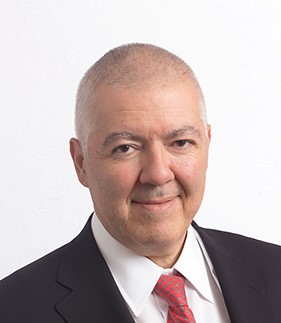
Q&A with Gabriel Bousbib of Arel Capital
Co-Founder and Managing Partner
Principal Series:
Founded in 2013, Arel Capital is a real-estate investment firm, focused on medium size cash-flowing multi-family residential properties, with more than 150 investors globally. Since 2013, Arel Capital has acquired, improved, developed and/or financed 45 properties in nine U.S. markets, representing $1.9 billion worth of real estate.
Leveraging the firm’s history of success in multiple markets across the United States, the firm is launching the Arel Real Estate Income Fund (the “Fund”), focused on the U.S. multi-family rental market, with a limited allocation to private high-yielding real-estate backed loans.

Family Office Insights is a voluntary, “opt-in” collaborative peer-to-peer community of single family offices, qualified investors and institutional investors. Join the community here www.familyofficeinsights.com
Why does Arel Capital invest in the “Class B” Multifamily segment of the market?
"Arel focuses on multifamily opportunities in the United States, targeting potential annual net returns in the mid to high teens over a 5 year to 10-year period. On a relative basis, we prefer multifamily “Class B” assets as their performance tends to be less impacted by the economic cycle, contrary to the “Class A” multi family segment, retail and office properties. With a few exceptions, we have not found that the current cap rate differential between office, retail and multifamily justifies the greater risk associated with retail and office properties. Additionally, we have found that demand for our “Class B” workforce housing is likely to remain steady due to a supply/demand imbalance which is likely to last several decades.
Accordingly, we anticipate that “Class B” assets in demographically growing submarkets, will continue to generate stable cash flow for investors. "
How do you create “value” after acquisition?
When we buy a multi-family asset, we are effectively buying a cash flowing asset (usually 5% to 6% annual cash on cash at acquisition) which serves as a platform for executing a value-add program (the investment alpha), irrespective of potential market rent growth (the investment beta). Our value-add programs are usually centered around 2 key axes: Unit upgrades: the properties we purchased were usually developed in the late 1970s, 1980s or 1990s. Accordingly, the unit interiors and appliances are quite tired and can benefit from upgrades which can include new faux wood flooring, new kitchen and bathroom appliances as well as new kitchen counters. Typically, we seek to obtain rent premiums ranging from $125 to $200 against unit upgrade costs of $5,000 to $8,000. Common area improvements: in our value-add programs, we typically seek to improve the property’s clubhouse, the pool and the gym, as well as create a more modern amenity center and a dog park. We normally expect an ROI from such investments ranging from 35% to 50%. It is important to note that in many cases, the properties we purchase suffer from poor operational management, both in terms of revenue and costs. We typically seek to capture “loss to lease” opportunities for units which are not correctly priced vs. the market.
Describe the markets in which your new fund will operate and provide an overview of the current opportunities. Discuss how the current market environment compares/differs to that of prior funds or deals.
Our approach to real estate investing is to focus mostly on multifamily opportunities in North America that can generate annual returns above 15%. We focus our investments in the largest cities that have liquid and transparent real estate markets such as New York, Houston, Austin, Denver, Charlotte, Tampa/ St. Pete and Nashville, TN. These cities are then ranked based on expected rental growth. We look for cities that are likely to generate strong rental growth but where properties can be acquired at relatively attractive prices. On a relative basis, we are attracted to multifamily due to the lower levels of economic cyclicality when compared to retail and office properties. We do not feel that the cap rate differential between office, retail and multifamily justifies the greater risk associated with retail and office properties. Our view is that occupancy can be managed through changes to rents, and that rental properties tend to be price elastic, meaning that a slight lowering of rents can generate significant demand and occupancy. This is in contrast to office or retail spaces that can often stay vacant despite a drop in leasing rates. Put simply, there is always demand for places to live.

Gabriel Bousbib of Arel Capital
Mr. Bousbib is the co-founder of Arel Capital and is responsible for the firm’s non investment functions. He is an investment professional with nearly 30 years of experience, managing risk and building the operational infrastructure supporting rapidly growing asset management firms.
From 2005 to 2013, Mr. Bousbib formerly served as Chief Operating Officer for Gottex Fund Management, and a member of its Executive Committee. He also served as Executive Chairman of LUMA Solutions Services, the services arm of Gottex Fund Management.
From 2001 to 2005, Mr. Bousbib served as President and Chief Executive Officer of PlusFunds, a hedge fund managed account platform, until December 2004.
From 1996 to 2001, Mr. Bousbib held a number of operating and corporate development positions with the Reuters Group, including Managing Director of business development as well as Chief Operating Officer in the risk management division.
Mr. Bousbib started his career in the securities industry in 1987 with Merrill Lynch Capital Markets, in Merrill Lynch’s global derivatives group.
Mr. Bousbib holds an M.B.A. from Columbia University Graduate School of Business and is a graduate from Ecole Polytechnique in Paris.
Contact Arel here:
george.yepes@arelcapital.com
www.arelcapital.com
